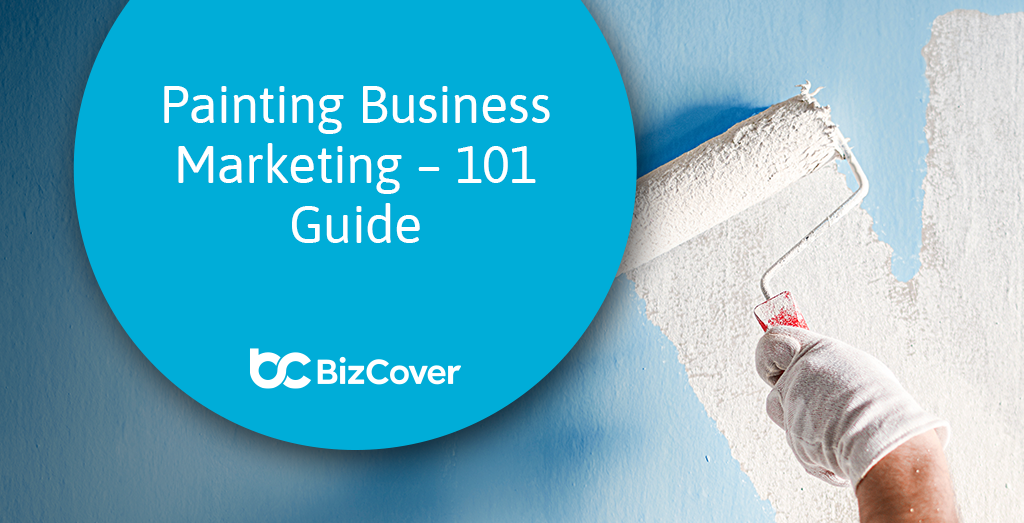7 essential marketing ideas for your painting business
The trade of painting is an extremely popular occupation in Australia. And you can see why. Painters are skilled at applying paints, varnishes and other special coatings to surfaces such as buildings, homes, schools and other structures. This allows them to be in demand Australia-wide, allowing them to work nearly anywhere.
The pay is excellent too, with painters generally expecting around $70k per year.
While you want your painting business to succeed, it will likely not be easy to stand out among the crowd of more than 21,000 painting business owners – each of whom is vying for a slice of the market share.
This is why you’ll likely need some marketing ideas to make sure your painting business is an outlier in an ever-growing market.
This painter’s guide to marketing will provide you with top tips to help grow your business.
1. Get people talking about your painting business
Like other trades, painting businesses often rely on referrals from past customers to generate new leads. One of the first marketing goals you could set is to ensure you generate work-of-mouth about your painting business.
It can start organically with your family and friends when you first start, but it can quickly grow if you focus your efforts. Firstly, the key is to ensure that your business service is flawless. No matter what your job, you want to try to present yourself as a professional who is knowledgeable about their field. This means that you want to be punctual, polite, and thorough in your work. For every positive customer experience, there is a whole network of potential customers that you could tap into.
You can also encourage customers to leave reviews. This will help you generate word-of-mouth for your business through online forums such as Facebook or Google. Negative reviews can also be a way to learn for less experienced people.
2. Advertise yourself
One way to advertise a painting business is to advertise yourself. Make a slogan and logo that people will recognise and stick it on a T-shirt or on your ute. Being your own personal advertisement can be a powerful marketing tool that could help you promote your painting business. You have many other options when it comes to physical advertising.
From bus seats to buses, the sky’s the limit, and it will likely come down to what you can afford. Try not to get carried away, as the purpose of your advertising is to increase brand awareness and generate new leads.
3. Generate an online presence
Although physical advertising is effective, your painting business’ online presence can be the deciding factor of whether a potential clients goes with you or your competitor. Engaging in online strategies can help painters connect with their target audience. You may miss out on valuable leads if you don’t build your online network.
A company website is the core of your online business. You have two options depending on your tech skills: you can build it yourself or hire an expert to help. You can then engage with customers via social media platforms like Instagram or Facebook and build your brand through competitions or content.
Another way to connect with customers is through email marketing. Email marketing allows you to create personalised content about your painting business for your mailing list, providing a platform for self-promotion. Statistics indicate that email is an effective marketing tool, generating an astounding $42 return for every $1 spent.
There are many opportunities online, from Google Ads to SEO optimisation. Don’t worry if you don’t have the knowledge straight away. Although you may be an expert in many areas, online marketing is something that can be improved upon over time. Still you can start building your online presence by reaching out to people who are already experts in the field. This avenue will allow you to generate more leads by applying the latest digital marketing techniques.
4. Blogging
It might not be the first marketing strategy that comes to mind for a painting business, but blogging can be an unexpectedly effective way to build trust and establish your expertise. Your blog could cover a variety of topics, from how to choose the right primers to the most effective painting techniques.
Such informative content positions you as a knowledgeable and reliable professional in your field. Within each blog post, sprinkle in details about your services and how readers can reach out to you. This approach not only educates but also subtly guides potential clients towards choosing your services.
5. Create partnerships
Strategic partnerships can significantly expand your painting business’s reach. Teaming up with reliable, well-known individuals or businesses can elevate your brand’s recognition to new heights.
Consider innovative collaborations, such as developing a unique paint color with a local influencer or partnering with a popular paint store for better shelf positioning or in-store promotions. These partnerships can mutually benefit all involved. They help you tap into an audience that is already engaged and likely to be interested in your unique offerings.
6. Establish a referral program
Word-of-mouth is a powerful tool, and with the right incentives, it can work wonders for your business growth. Encourage your satisfied customers to become brand ambassadors by introducing a referral program. For instance, offer them a service discount or a financial reward for each new client they refer who signs up for your painting services.
This method not only makes your services a topic of interest among potential clients but also helps in retaining your existing customer base. Providing tangible rewards, such as gift cards for each successful referral, adds an exciting element to your customer engagement strategy and makes your business stand out.
7. Start with the basics
While you may be ready to go, it’s important to consider getting the basics right first before you explore some painting business marketing strategies.
Firstly, you’ll need to get an Australian Business Number (ABN) and to pick the right business structure for your painting business.
If you decide to register as a sole trader rather than as a company, your registration should be pretty easy and inexpensive.
However, it’s important to note that sole traders are personally responsible for the business’ finances. This is called personal liability, which means your personal assets liable if something goes wrong.
Secondly, you will want to ensure that you are licensed to operate in your jurisdiction. Each state has their own requirements, so be sure to check out this blog talks about licensing in Australia.
You may also want to consider getting some painters insurance.
Sometimes, things don’t go to according to plan and it’s critical to consider getting painters insurance for when they do. A popular type of insurance for painters is Public Liability cover.
Public Liability insurance is designed to cover legal fees and compensation costs if a customer, member of the public or a supplier claims against you for injury or damage to their property as a result of your alleged negligent business activities. So, if somebody trips over your roller or you spill some paint on some hardwood floors, you’ll likely have protection if a claim is made against you.
The bottom line
Launching a painting business in Australia can be an amazing career move. Being a painter will allow you to learn new skills and you will rarely do the same job twice. This blog will hopefully help promote your painting business and push it in the right direction so you can stand out from the crowd.
This information is general only and does not take into account your objectives, financial situation or needs. It should not be relied upon as advice. As with any insurance, cover will be subject to the terms, conditions and exclusions contained in the policy wording. © 2025 BizCover Limited.





